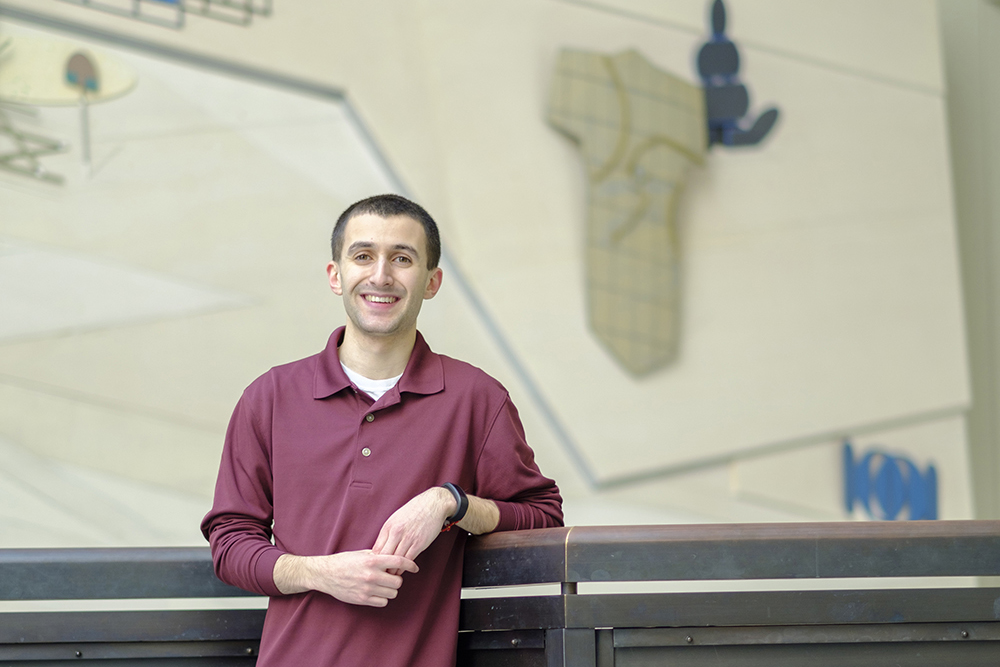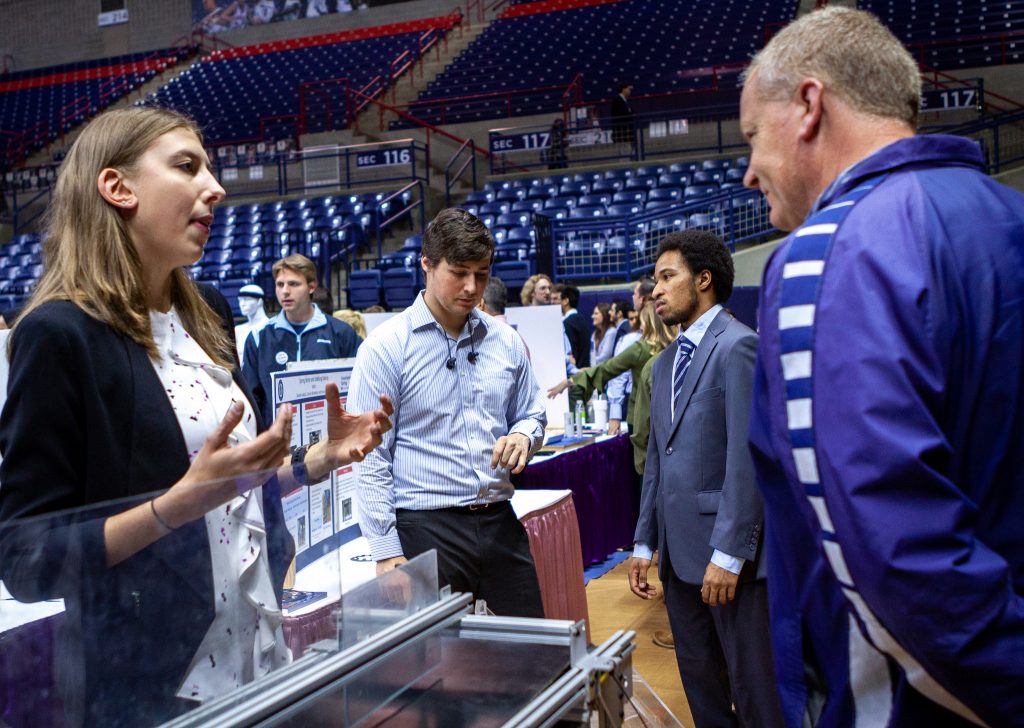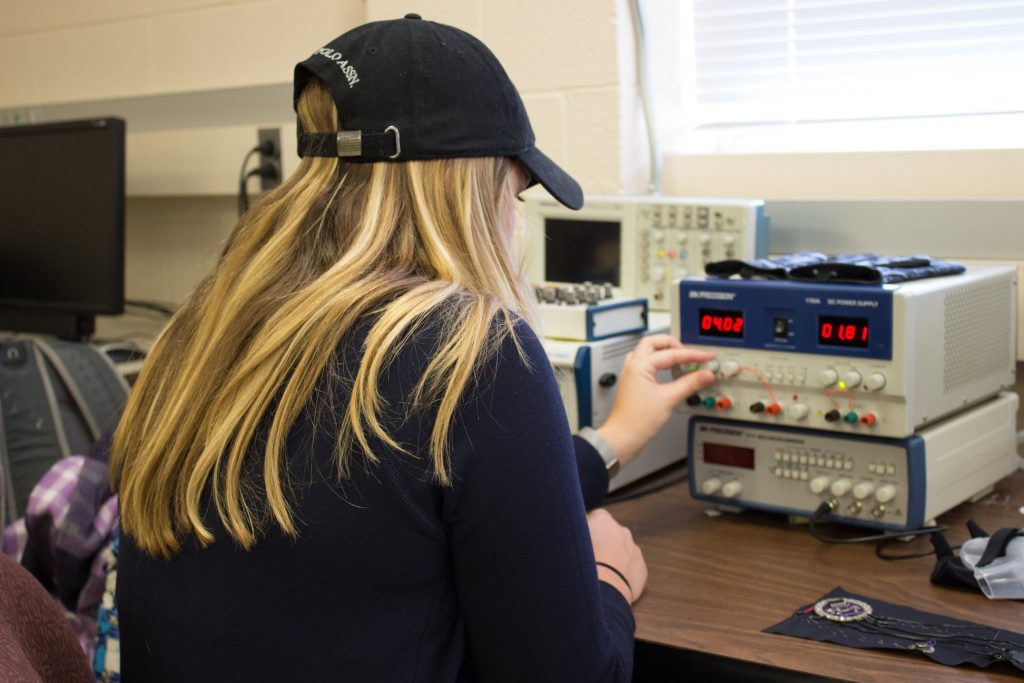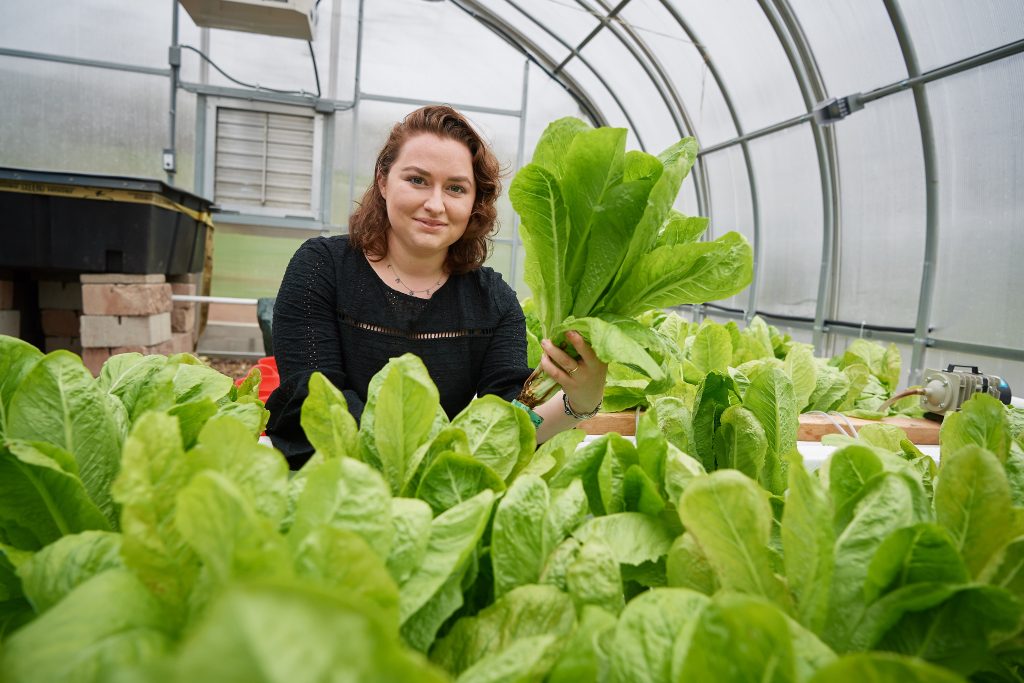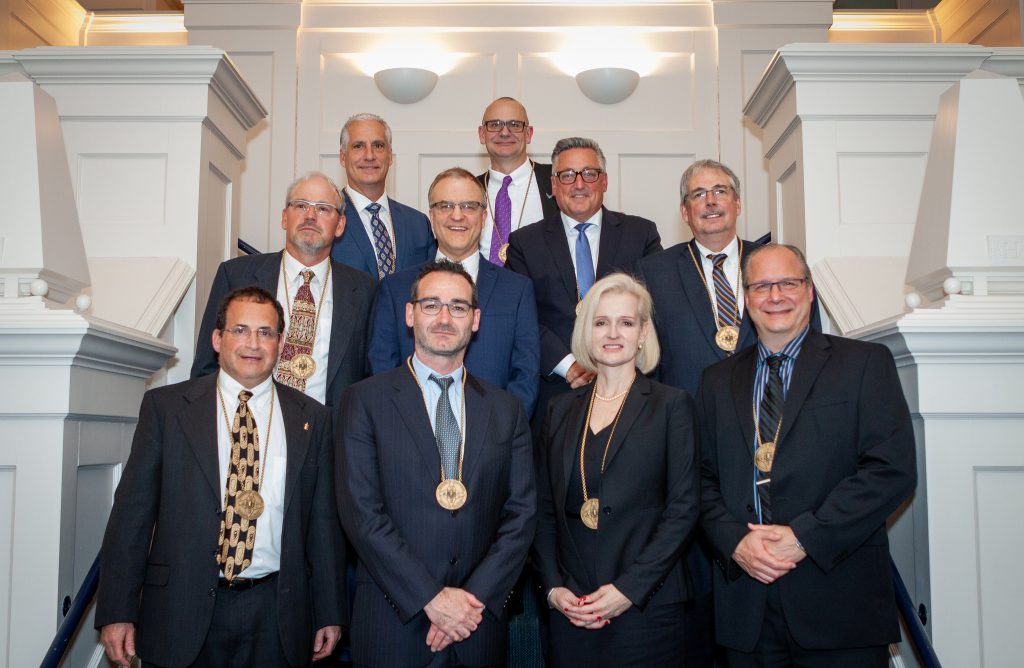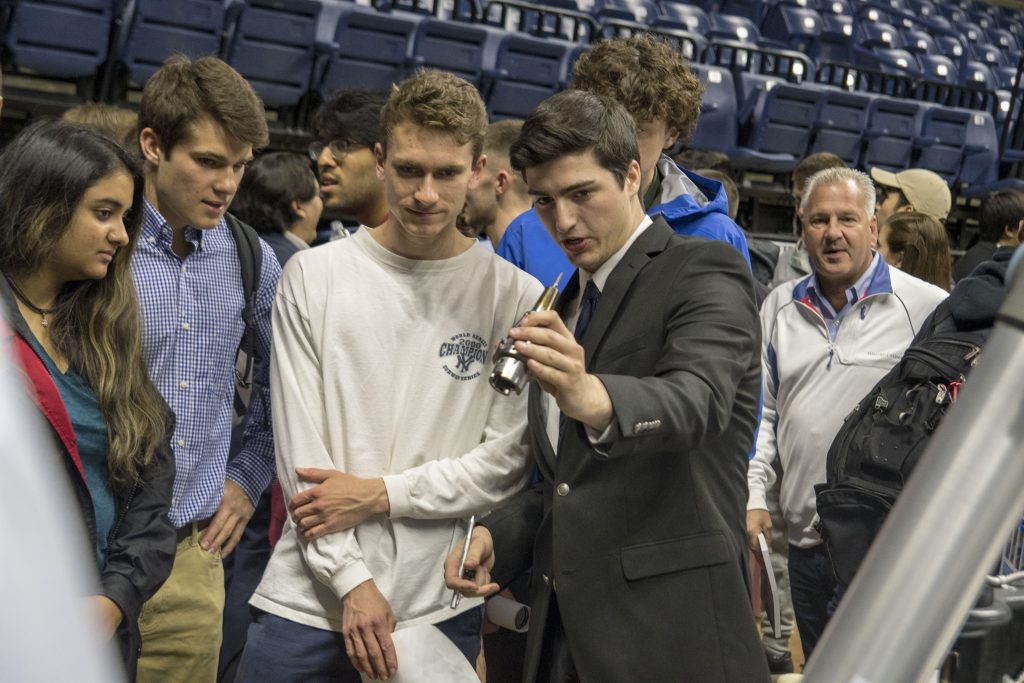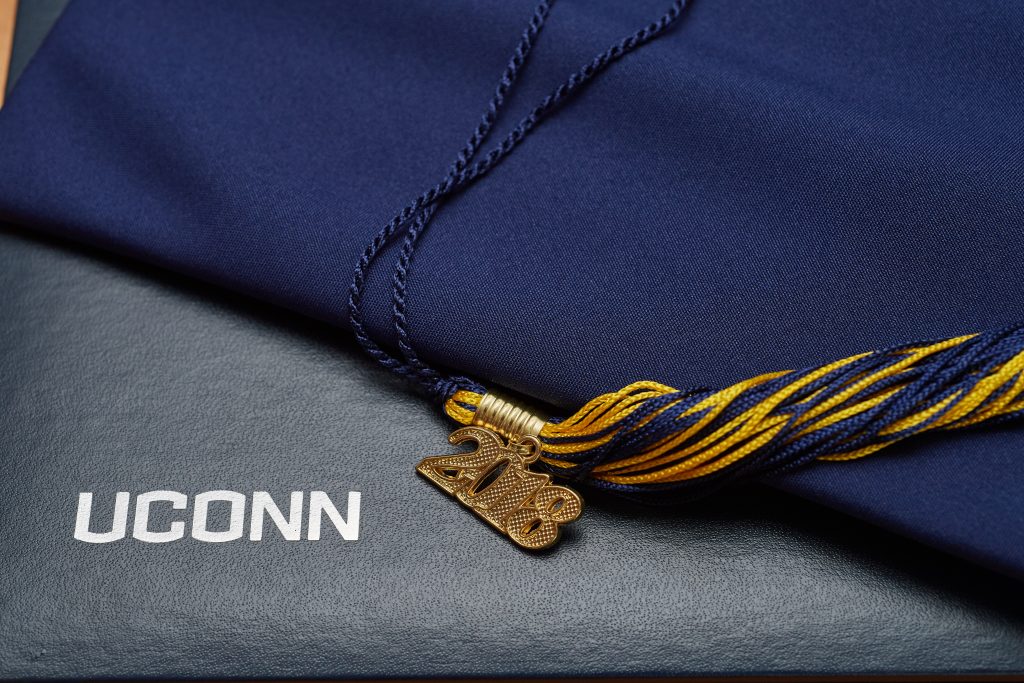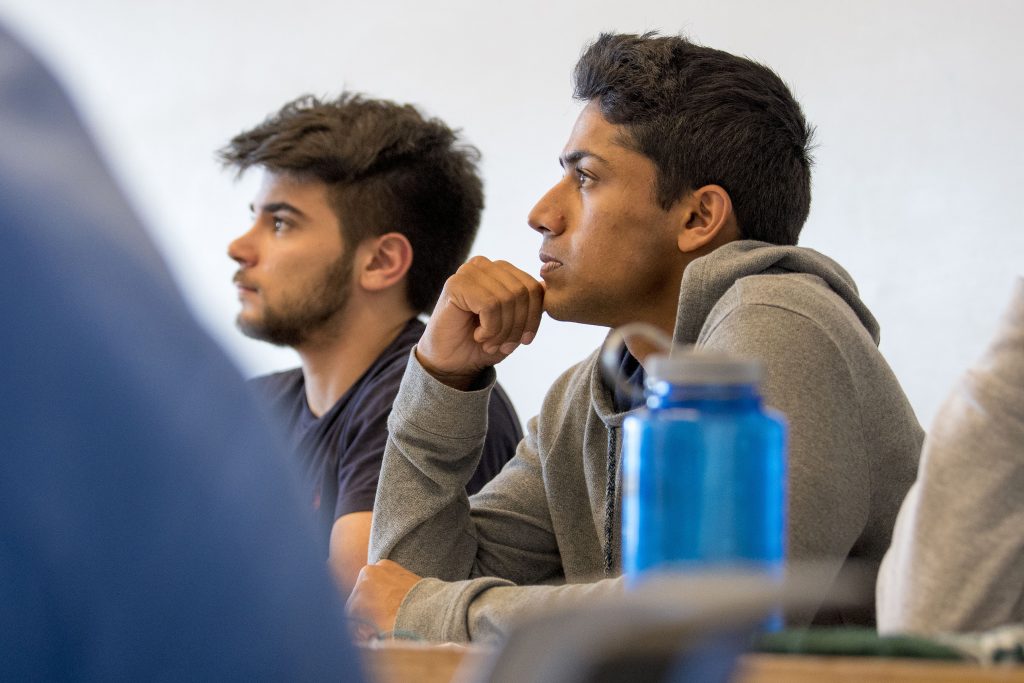College of Engineering
A Dozen UConn Students, Alums Win NSF Graduate Fellowships
UConn students in fields as varied as chemical engineering, physics, and political science, have earned support from the National Science Foundation for their graduate work.
May 4, 2018 | Combined Reports
Senior Design Demonstration Day: Providing Innovative Solutions to Technical Challenges
Two hundred and twenty-eight groups, consisting of nearly 800 seniors stood proudly by projects ranging from as small as a cyborg insect, to as large as an all-electric car, inside of Gampel Pavilion. The capstone projects, which were the culmination of a year’s-worth of work, are known as Senior Design, and are presented annually at Senior Design Demonstration Day.
May 3, 2018 | Eli Freund
Senior Design: Using Vibrational Therapy to Change the Outlook for Cerebral Palsy Patients (Part 2)
Entering the final stretch of their Senior Design journey, the biomedical engineering team of Brianna Perry, Morgan DaSilva, Brittany Morgan, and Katie Bradley are realizing the crushing realities of real-world results versus perfect-world expectations.
May 3, 2018 | Eli Freund
Growing with Aquaponics at UConn
A new student-led aquaponics system at the Spring Valley Farm is proving fertile ground for research and interdisciplinary projects in addition to fresh produce.
May 3, 2018 | Elaina Hancock
Ten Accomplished Alumni Inducted into the Academy of Distinguished Engineers’ Class of 2018
The Academy, which has inducted 165 total members since its inception in 2003, honors School of Engineering alumni whose careers are characterized by their sustained and exemplary contributions to the engineering profession through research, practice, education, policy or service. Members are individuals who bring enduring honor to their alma mater as practitioners and as citizens.
May 2, 2018 | Eli Freund
Ten Accomplished Alumni Inducted into the Academy of Distinguished Engineers’ Class of 2018
On a Thursday night, at the end of April, 10 accomplished UConn School of Engineering alumni joined their peers during an induction ceremony of the Academy of Distinguished Engineers.
May 1, 2018 | Eli Freund
Designed to Graduate: Engineering Majors Display Their Senior Projects
Engineering majors presented their capstone projects to peers and the public at Senior Design Demonstration Day.
April 30, 2018 | Garrett Spahn '18 (CLAS)
WFSB Channel 3 Feature on Senior Design Demonstration Day
An overview of the 2018 UConn Engineering Senior Design Demonstration Day from WFSB Channel 3 News, and reporter David McKay.
April 28, 2018 | Eli Freund
Commencement 2018
The Class of 2018 will mark the end of their time here at Commencement ceremonies May 5-7. Read on for stories about the graduating seniors, where they are headed, and the memories they are taking with them.
April 27, 2018 | Kristen Cole
Student-Athlete Strong: Nabeel Khan
'Being a Husky means being a part of, embracing, and carrying on the traditions of UConn Nation,' says golfer Nabeel Khan '19 (ENG).
April 26, 2018 | Susan Twiss
